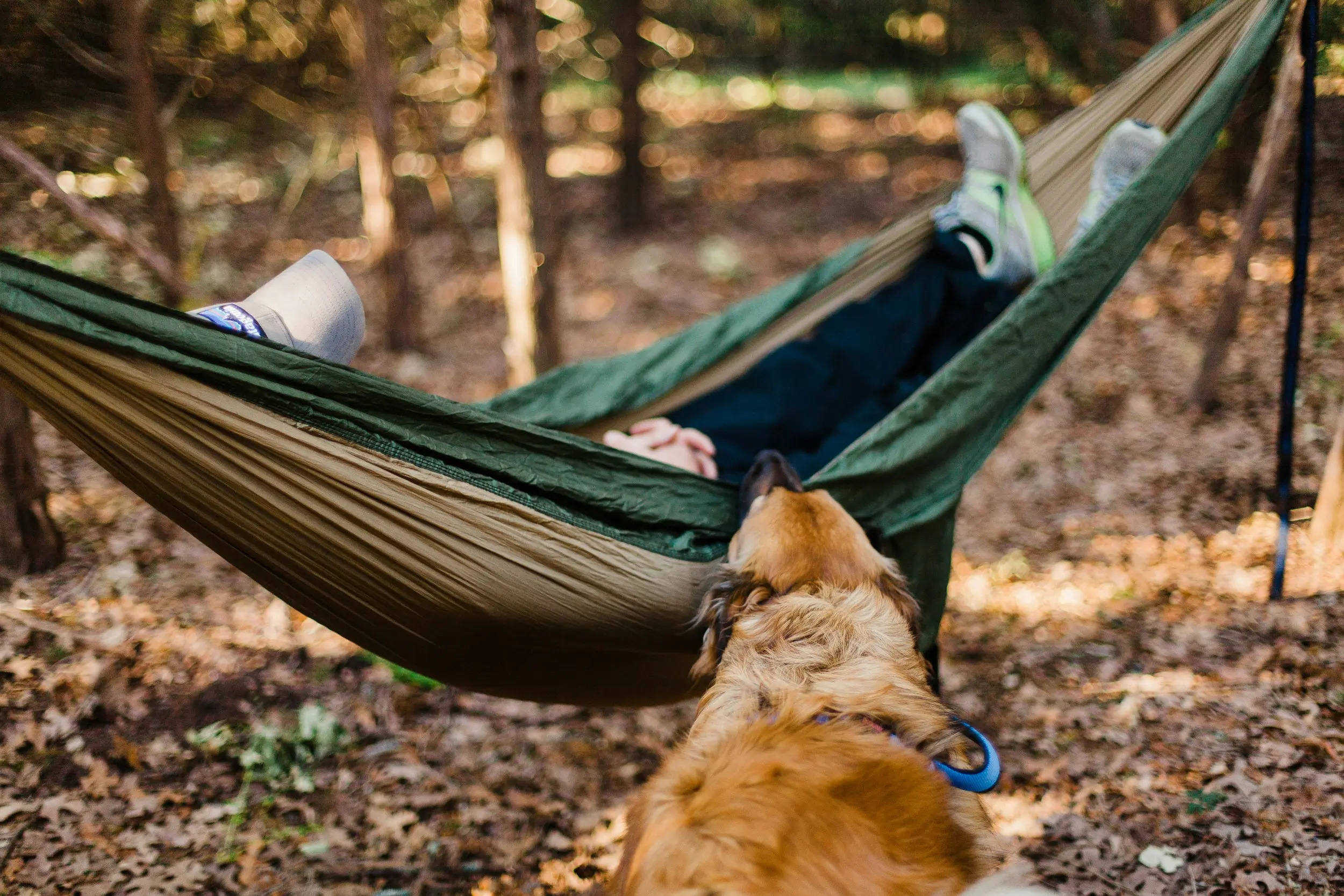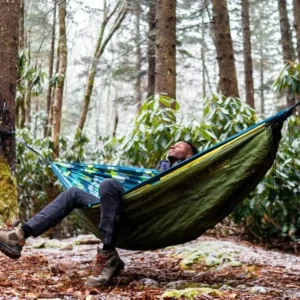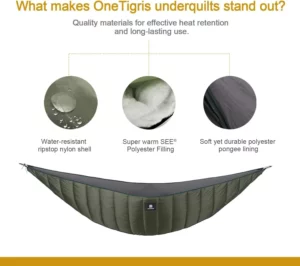When it comes to hammock camping, warmth is key. That’s where a hammock underquilt steps in—an essential gear piece to keep the cold at bay. Let’s dive into everything you need to know about finding the best hammock underquilt for your outdoor adventures!
What is a Hammock Underquilt?
Imagine a chilly night, swaying in your hammock, and suddenly the cold air creeps in from below. Yikes! That’s where the hammock underquilt saves the day. Unlike sleeping bags or pads that squish under you, losing insulation power, underquilts hang beneath the hammock. This means no cold spots and no air sneaking up on you.
The best part? They’re designed to wrap snugly around your hammock, providing a toasty cocoon of warmth. Whether you’re hiking deep into the woods or just hanging out by the campsite, an underquilt is a must-have for comfort and warmth. Forget wrestling with pads—an underquilt gives you uninterrupted coziness, no matter how much you move.
Chart
Before we dive in the world of underquilts, you should check which insulation type will be the best for your needs.
Top 5 Best Hammock Underquilts
Alright, now let’s jump into the best options out there. Here’s the scoop on the top 5 hammock underquilts that will keep you warm without breaking your back (or your budget):
ENO Ember UnderQuilt
Lightweight, packable, and fits most hammocks. The synthetic fill performs well in damp conditions, and the easy attachment system makes it beginner-friendly. Perfect for weekend warriors!
OneTigris Night Protector Hammock Underquilt
A budget-friendly option without sacrificing warmth. It features a soft polyester fill that insulates down to 40°F. Quick to set up and ideal for three-season camping.
Outdoor Vitals StormLoft Down UnderQuilt
Premium down insulation provides an unbeatable warmth-to-weight ratio. It’s a solid pick for ultralight backpackers. Rated down to 15°F, so it’s ready for winter escapades.
Hammock Gear Economy Incubator
The Hammock Gear Economy Incubator is the go-to for campers who crave warmth without extra bulk. This full-length underquilt wraps around you completely, delivering unparalleled insulation, even in frigid conditions. The down fill ensures top-notch warmth while staying incredibly lightweight and compressible, so it’s easy to pack for extended trips or ultralight hikes. Its design means even coverage from head to toe, keeping every part of you cozy. For serious campers ready to brave the cold, the Economy Incubator is the underquilt that brings both comfort and reliability to your outdoor setup.
Aegismax Hammock Underquilt
A super lightweight option for minimalists. The Aegismax provides solid insulation in moderate conditions and won’t weigh you down on the trail. It’s affordable, too!
These picks cover a range of temperatures, budgets, and adventures, so you can find your perfect match.
How to Choose the Right Underquilt
Choosing the right underquilt doesn’t have to be complicated. Here’s what to look out for:
- Temperature Rating: Know the coldest temps you’ll camp in. If you’re a three-season camper, 20°F-40°F is the sweet spot.
- Insulation Type: Down is light and ultra-warm, but pricey. Synthetic is bulkier but keeps you warm when wet and is more affordable.
- Full vs. ¾ Length: Full-length quilts cover your entire body, while ¾ length saves weight, covering from shoulders to knees.
- Weight: Are you thru-hiking? You’ll want a quilt that packs down small and light.
Your underquilt should match your camping style—whether it’s ultralight trekking or cozy car camping.
Down vs. Synthetic Insulation: What’s the Difference?
Here’s the age-old debate: down or synthetic? Let’s break it down:
- Down is known for its amazing warmth-to-weight ratio. It compresses well and is unbeatable in dry conditions. Perfect for winter camping.
- Synthetic is heavier but holds up in wet conditions. If you’re camping somewhere humid or rainy, synthetic insulation is the safer choice.
- Price Difference: Down quilts tend to cost more, but their performance and packability make it worth the investment if you’re after light gear. Synthetic, on the other hand, is budget-friendly and durable.
Your decision boils down to weather and budget. Heading out for wet adventures? Go synthetic. Want to save weight and maximize warmth? Down’s the answer.
How to Set Up Your Best Hammock Underquilt
Setting up an underquilt is simple, but you’ve got to do it right to lock in the warmth. Here’s how:
- Attach the underquilt’s suspension (usually shock cords) to the ends of your hammock.
- Make sure the quilt hugs the bottom of the hammock, leaving no air gaps.
- Adjust tension so it’s snug but not tight. You want it to cradle you, not compress the insulation.
- Test the setup by lying in the hammock. Feel any drafts? Tighten things up or adjust the positioning.
You’ll know it’s perfect when the warmth wraps around you like a toasty cocoon.
FAQs
Best Camping Hammock With Mosquito Net for choosing the best hammock







